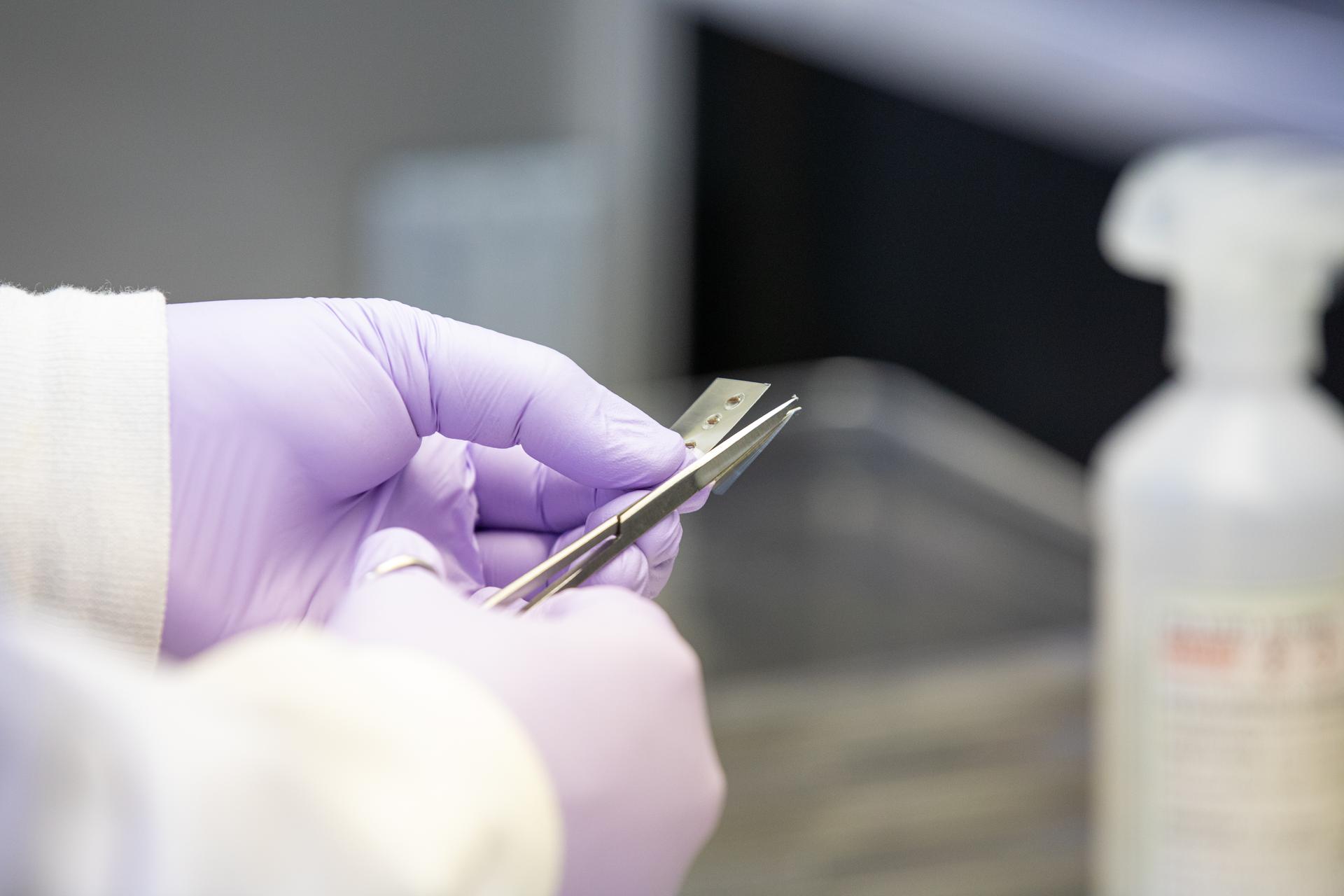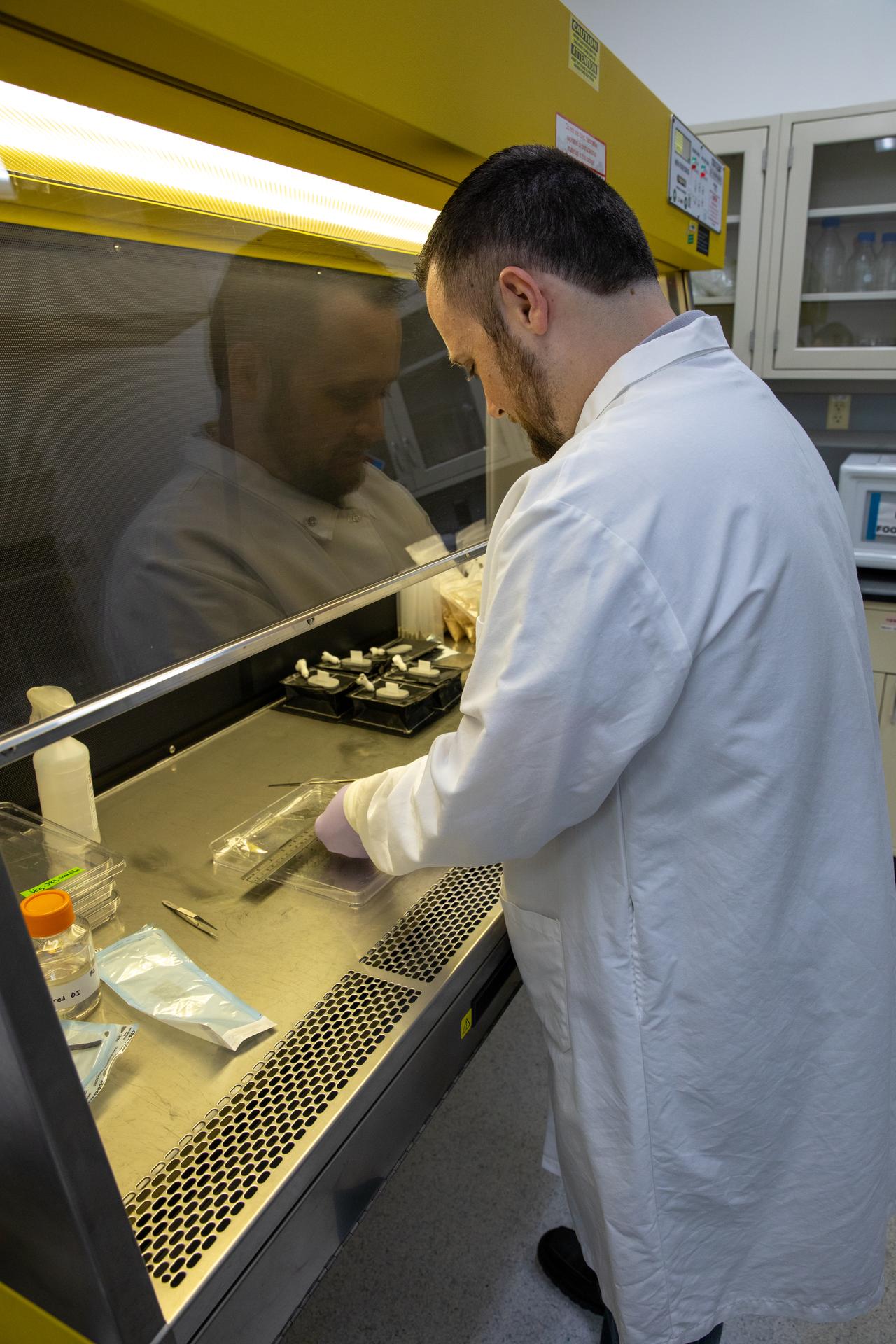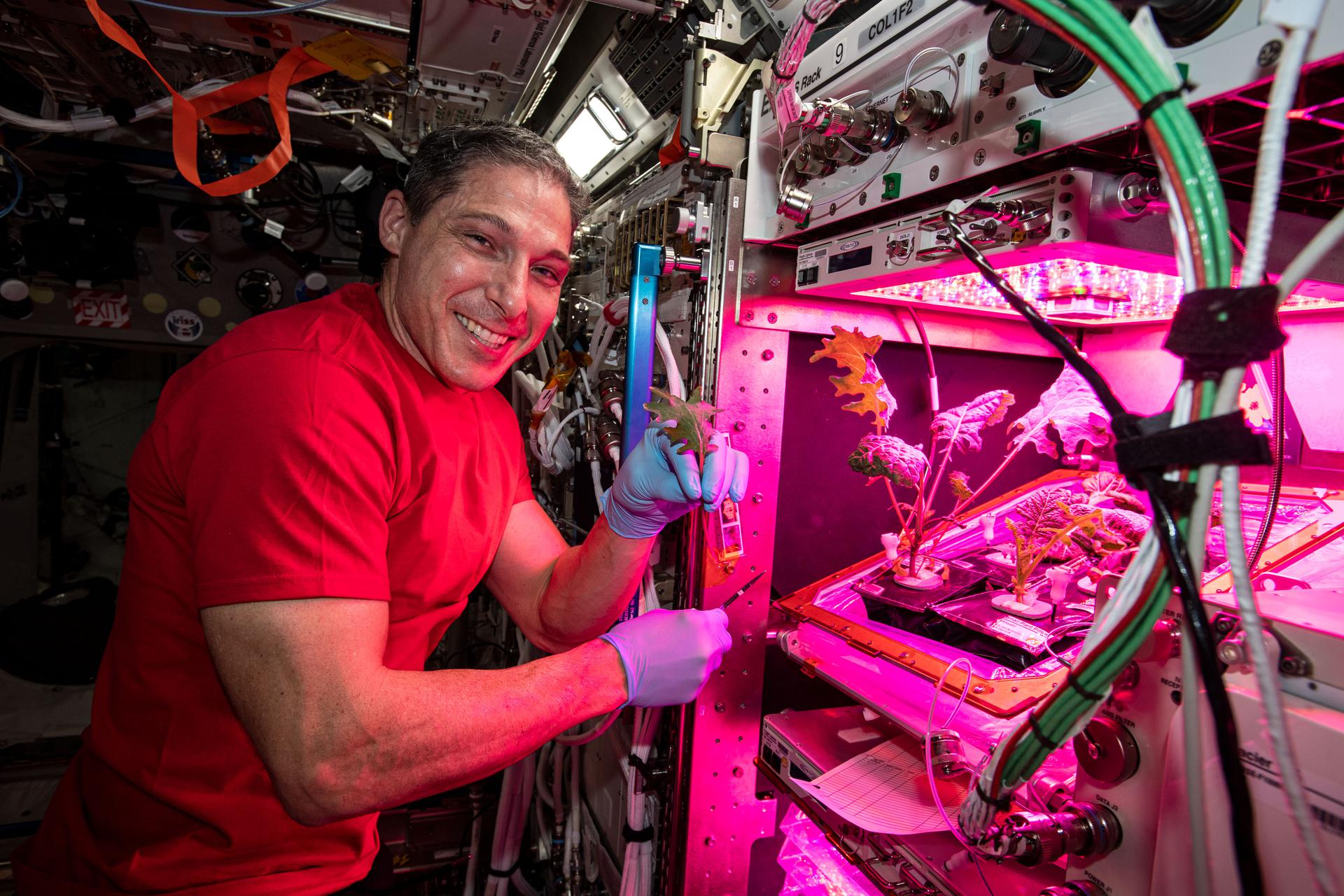By Jim Cawley
NASA’s Kennedy Space Center
What started five years ago as a casual conversation among a small group at NASA’s Kennedy Space Center recently showed results that one day may help feed astronauts on long-duration space missions. Plant researchers at the Florida spaceport had been chatting about new ways to plant crops in microgravity when they came up with the idea of a seed film.
They started with a water-soluble polymer, similar to a breath freshener strip, and embedded it with seeds, hoping to give astronauts more flexibility for growing plants in space. Recent samples from lettuce grown on the International Space Station returned to Earth for analysis show that the team may be onto something.
One strip can carry multiple seeds, making them easier to store, handle, and control. The strips also prevent the seeds from flying away in microgravity. Plant scientists also believe nutrients could be added to the seed film solution to facilitate plant growth.
Initial study of plants grown from seed film show that the new method may increase the rate of germination and possibly encourage quicker growth under the same conditions. Microbiologist Aaron Curry was among the Kennedy team who analyzed plant samples from the VEG-03J experiment grown aboard the orbiting laboratory in the Vegetable Production System (Veggie). The most important result is that the method is safe for astronauts to use.
“Since the seed film introduces another source of carbon, one concern was there would be more food for microbes to consume and potentially proliferate as a result of that presence,” Curry said. “But so far from this testing, that does not appear to be the case. The plants grown with the seed film appear to be as safe to eat as other plants previously grown on station.”
NASA astronaut Michael Hopkins initiated the experiment on Jan. 4, 2021, by planting the seed film and, about a month later, he harvested ‘Outredgeous’ red romaine lettuce. Samples of the leaves returned from the space station late last year on SpaceX’s 23rd Cargo Resupply Services mission, splashing down in the Atlantic Ocean off the coast of Florida on Sept. 30, 2021. This was NASA’s first plant experiment that had an astronaut plant, grow, and harvest a crop in space.
Trent Smith, manager of Kennedy’s Technology Transfer Program, was the project manager for the Vegetable production system at the time and first floated the idea for seed film. That led to multiple “watercooler-type discussions” among Kennedy colleagues, followed by the concept.
“It wasn’t a response to any challenge or direction we were given – this is one of those ideas that just happened spontaneously,” said Ralph Fritsche, senior project manager for space crop production at Kennedy.
The researchers developed, tested, and evaluated the film at the spaceport. From there, the team kept setting and achieving goals, including securing a ride to the space station. That came on Feb. 15, 2020, aboard a Cygnus spacecraft launched from Pad-0A at NASA’s Wallops Flight Facility in Virginia.
“So you go from having an innocuous conversation … you fast forward to a few years later and you’re flying hardware in space and demonstrating it,” Fritsche said. “That’s where I think NASA, and especially in our area here at Kennedy, is really strong – thinking ahead to try to solve problems above and beyond their regular work assignments – we try to think about the future and how we in the agency can be successful.”
Looking ahead, one focus for NASA scientists is deploying a crop production capability that can support the astronauts’ pre-packaged food system with supplemental nutrients on long-duration human spaceflight, such as a future mission to Mars. With the seed film being potentially customizable, Curry believes they could plan for specific environmental stresses on the plants.
For example, NASA could embed seed film with components to protect plants from the drought or flood stress sometimes encountered in microgravity. Seed film could also contain protective or growth promoting microorganisms, fertilizers, or chemical plant growth regulators. Additionally, seed film could enable sending multiple types of seeds to space, giving astronauts a choice of which crops to plant. Future experiments on the space station would receive treatments to test ways to successfully use them on long duration missions.
“It’s fun to think about; it’s kind of like an evolving puzzle,” Curry said. “The seed film is something that we theorized would work, we’ve shown it can work, and now what can we do to advance this further? I think that’s an exciting prospect knowing this technology has potential future applications beyond what it already has shown it can do.”
Technologies like these may help support NASA’s Artemis missions which, together with commercial and international partners, will establish a sustainable presence on the Moon to prepare for future missions to Mars.
To learn more about research on the International Space Station, visit:
To learn more about NASA’s Biological & Physical Sciences, visit:






























